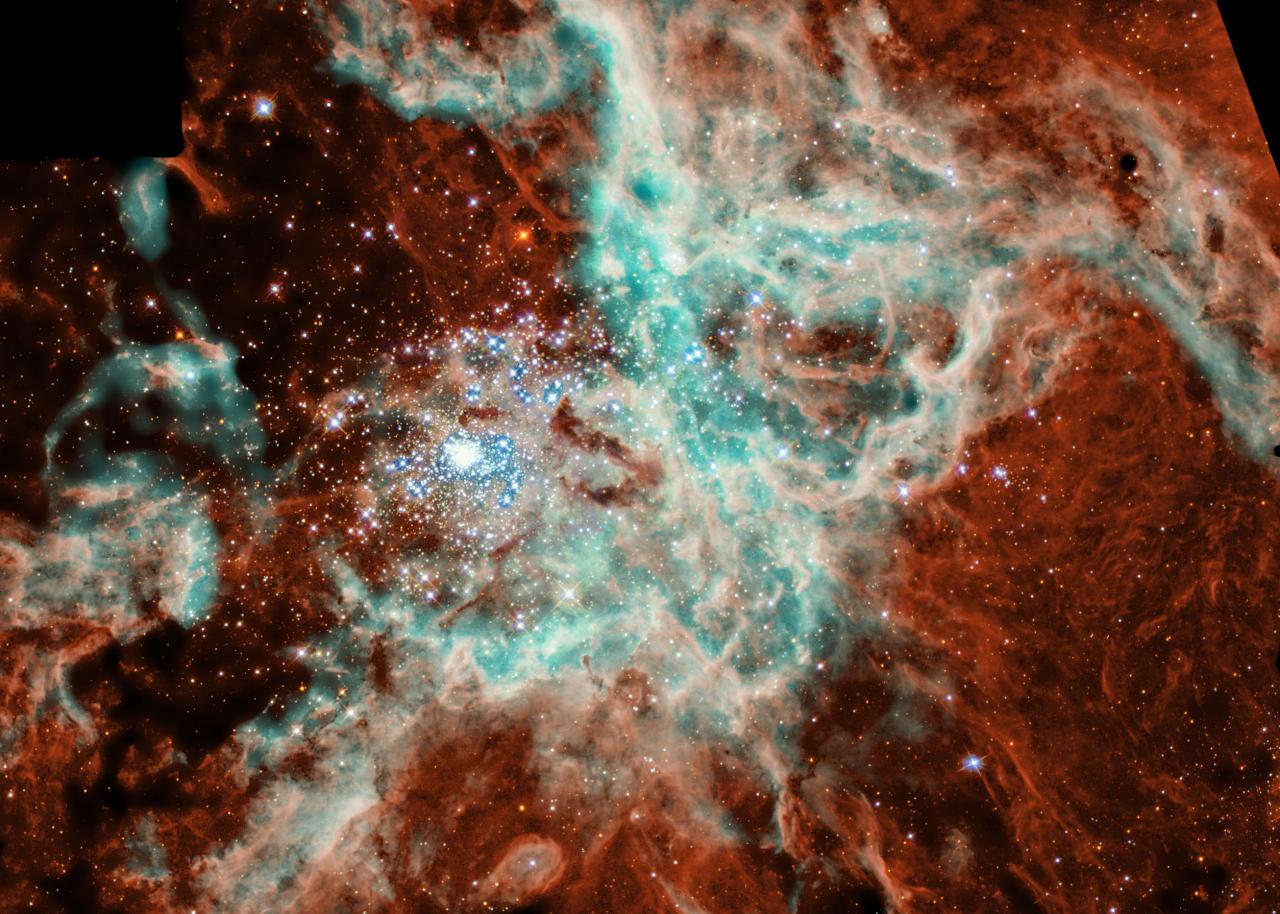The laws that determine how dust affects the light that reaches us from the stars are being rewritten
Laws used since 1989 to correct this effect prompted errors in the characterization of stars and needed revision
If the space traversed by light to reach our eyes were empty, knowing the properties of a star could be as simple as taking a picture of it and measuring its glow (something known as photometry). But the interstellar environment is strewn with dust that absorbs and scatters light, making objects look less luminous and redder—or colder—than they actually are. A recently published paper makes it possible, at last, to correct this distorting effect adequately.
"In the range of wavelengths that our eyes perceive -the visible light- of every billion photons that a star in the centre of the Milky Way emits, only one reaches our eyes,” says Jesús Maíz Apellániz, researcher at the Institute of Astrophysics of Andalusia (IAA-CSIC) in charge of the publication. “This is an extreme example of how dust affects the light of stars, a phenomenon that takes place in every single environment, albeit with less intensity."
The effect of dust, then, must be reckoned with in any astronomical observation before trying to extract the characteristics of an object. Maíz Apellániz, together with an international team of collaborators, showed that the laws used since 1989 to calculate the extinction of light produced by dust had serious limitations and yielded, among others, erroneous temperature estimates for stars. So they took it upon themselves to change those laws.

30 Doradus nebula. Credit: NASA, N. Walborn, J. Maíz-Apellániz and R. Barbá.
NEW LAWS FOR AN AGE OLD PROBLEM
The ideal method would be to have a group of objects whose characteristics (luminosity, temperature, etc.) were known from trustworthy spectroscopy measures and to compare them with measures obtained by photometry corrected by the traditional extinction laws. Deviations could then be used to reveal errors and correct those laws.
"We needed perfect data from a sample of ideal objects, and we found them in the VLT-FLAMES survey, a European Southern Observatory (ESO) project, centred on 30 Doradus or Tarantula nebula, inside the Large Magellanic Cloud", says Jesús Maíz Apellániz (IAA-CSIC). The researchers began their work six years ago. They started with a sample of one thousand stars and narrowed it down to eighty three “ideal” objects.
After subjecting the sample to different experiments which confirmed the great deviations that the laws of 1989 produce, they developed new versions of the laws which diminish, for instance, the temperature errors by two thirds.
In fact, the results yielded by the new laws are nearly as precise as those obtained through spectroscopy, which remains the most reliable method for detailed observations. "Nevertheless, this study makes it possible to obtain acceptable temperature estimates using photometry, with the advantage that this technique allows one to study more objects per unit of time," underlines Maíz Apellániz (IAA-CSIC).
The research comes at a convenient moment: limited extinction laws make it impossible to exploit the high quality data that present day instruments like the Hubble Space Telescope yield, and massive photometric surveys such as the one carried out by GAIA - which will observe one billion Milky Way stars- are at a peak. This new study will play an essential role in allowing us to exploit them.
J. Maíz et al. "The VLT-FLAMES Tarantula Survey. XVI. The optical+NIR extinction laws in 30 Doradus and the photometric determinations of the effective temperatures of OB stars". Astronomy & Astrophysics. DOI: http://dx.doi.org/10.1051/0004-6361/201423439
Instituto de Astrofísica de Andalucía (IAA-CSIC)
Unidad de Divulgación y Comunicación
Silbia López de Lacalle - sll[arroba]iaa.es - 958230532
http://www.iaa.es
http://divulgacion.iaa.es

